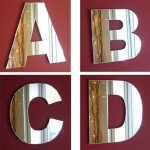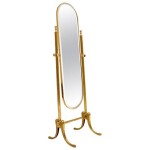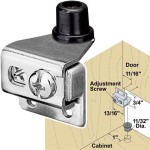Can Plane and Convex Mirrors Produce Real Images?
Mirrors, essential optical devices, are classified into two primary types: plane mirrors and curved mirrors. Curved mirrors can be further categorized into concave and convex mirrors. The type of image formed by a mirror depends on its shape and how it interacts with light rays. While plane mirrors always produce virtual images, the image formation in curved mirrors is more complex, with both real and virtual images being possible.
A real image is formed when light rays converge at a point after reflecting off a mirror. These images can be projected onto a screen, and they are inverted in nature. Conversely, virtual images are formed when light rays appear to diverge from a point behind the mirror, and they cannot be projected onto a screen. These images are upright and are often described as appearing "behind" the mirror.
Understanding Plane Mirrors
Plane mirrors, as their name suggests, have a flat reflecting surface. When an object is placed in front of a plane mirror, light rays emanating from the object strike the mirror and are reflected according to the law of reflection. The angle of incidence (the angle between the incident ray and the normal) is equal to the angle of reflection (the angle between the reflected ray and the normal). This reflection results in the formation of a virtual image behind the mirror, appearing to be the same distance behind the mirror as the object is in front of it.
The image formed by a plane mirror is always:
- Virtual: It cannot be projected onto a screen.
- Upright: The orientation of the image is the same as the object.
- Laterally inverted: The image is flipped horizontally, making it appear as if the object is reversed.
- The same size as the object: The image is not magnified or reduced.
Due to these characteristics, plane mirrors are widely used in everyday applications, such as makeup mirrors, rearview mirrors, and amusement park attractions that create illusions of depth and space.
Convex Mirrors: Diverging Light and Virtual Images
Convex mirrors, also known as diverging mirrors, have a curved reflecting surface that bulges outward, similar to the exterior of a spoon. When parallel light rays strike a convex mirror, they diverge or spread out after reflection, making it impossible for them to converge at a single point. This diverging nature of reflected light is the key characteristic that distinguishes convex mirrors from concave mirrors, which converge light.
The image formed by a convex mirror is always:
- Virtual: It cannot be projected onto a screen.
- Upright: The orientation of the image is the same as the object.
- Reduced in size: The image is smaller than the object.
This combination of characteristics makes convex mirrors ideal for applications where a wide field of view is desired. They are commonly used in:
- Vehicle side mirrors: Providing a broad view of the surroundings, even with a smaller mirror size.
- Security cameras: Offering a wide-angle view of a large area.
- Store surveillance: Allowing security personnel to monitor a larger area.
- Concave mirrors, also known as converging mirrors, have a curved reflecting surface that curves inward, like the inside of a spoon. Unlike convex mirrors, concave mirrors can produce both real and virtual images, depending on the object's position relative to the mirror. When light rays from an object strike a concave mirror, they converge at a point, forming a real image if the object is placed beyond the focal point. However, if the object is placed closer than the focal point, the reflected rays appear to diverge, creating a virtual image.
Concave Mirrors: The Potential for Real and Virtual Images
Concave mirrors, also known as converging mirrors, have a curved reflecting surface that curves inward, like the inside of a spoon. Unlike convex mirrors, concave mirrors can produce both real and virtual images, depending on the object's position relative to the mirror. When light rays from an object strike a concave mirror, they converge at a point, forming a real image if the object is placed beyond the focal point. However, if the object is placed closer than the focal point, the reflected rays appear to diverge, creating a virtual image.
The image formed by a concave mirror can be:
- Real: When the object is placed beyond the focal point, the image is formed in front of the mirror and can be projected onto a screen. The image is inverted and can be magnified or reduced, depending on the object's position.
- Virtual: When the object is placed closer than the focal point, the image is formed behind the mirror and cannot be projected onto a screen. The image is upright and always magnified.
The ability to produce both real and virtual images makes concave mirrors versatile tools with diverse applications, including:
- Telescopes: Using large concave mirrors to gather light from distant objects, forming magnified real images.
- Reflecting telescopes: Employing concave mirrors as the primary light-gathering element.
- Headlights: Focusing light into a beam, creating a bright illumination.
- Dental mirrors: Providing magnified images of teeth for dental procedures.
Understanding the fundamentals of image formation by plane, convex, and concave mirrors is crucial for various scientific and technological applications. From simple applications like makeup mirrors to complex ones like telescopes, these mirrors play a critical role in shaping our understanding of light and its interaction with matter.
Can A Convex Mirror Produce Real Image
Can A Convex Mirror Form Magnified Image Quora
Can A Convex Mirror Produce Real Image When The Object Is Virtual And Vice Versa Concave If Yes How Will It Be Possible Why Quora
When Does A Plane Mirror Produce Real Image Quora

Can A Convex Mirror Produce Real Image When The Object Is Virtual And Vice Versa Concave If Yes How Will It Be Possible Why Quora

I Plane And Convex Mirrors Are Known To Produce Virtual Images Of The Objects Draw A Ray Diagram Physics Optics Optical Instruments 11979051 Meritnation Com
Can A Convex Mirror Form Real Image Quora

Solved For Each Type Of Mirror Determine The Image Chegg Com

Flat Mirrors Physics Socratic
Reflection Optics Can A Plane Mirror Form Real Image Quora








